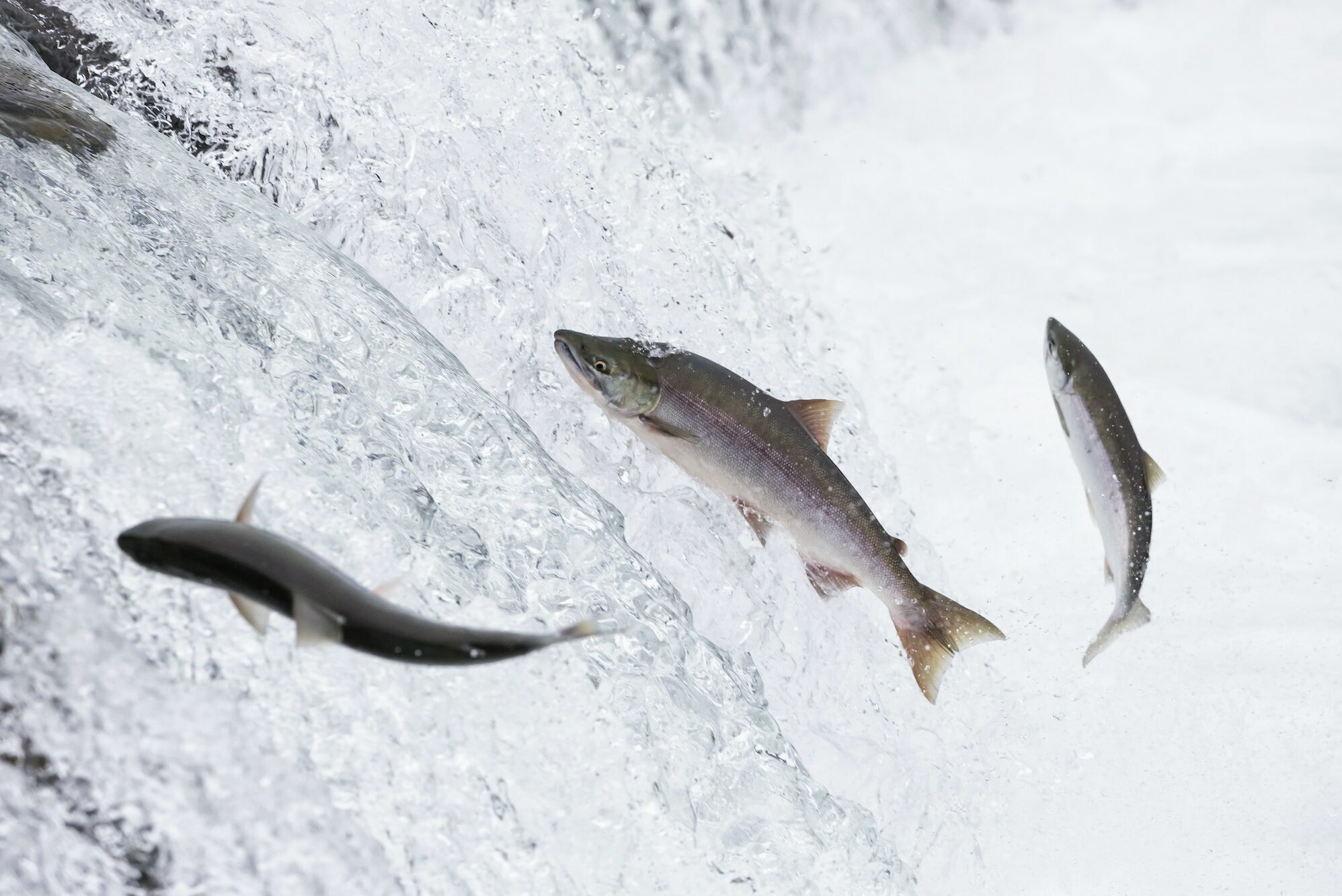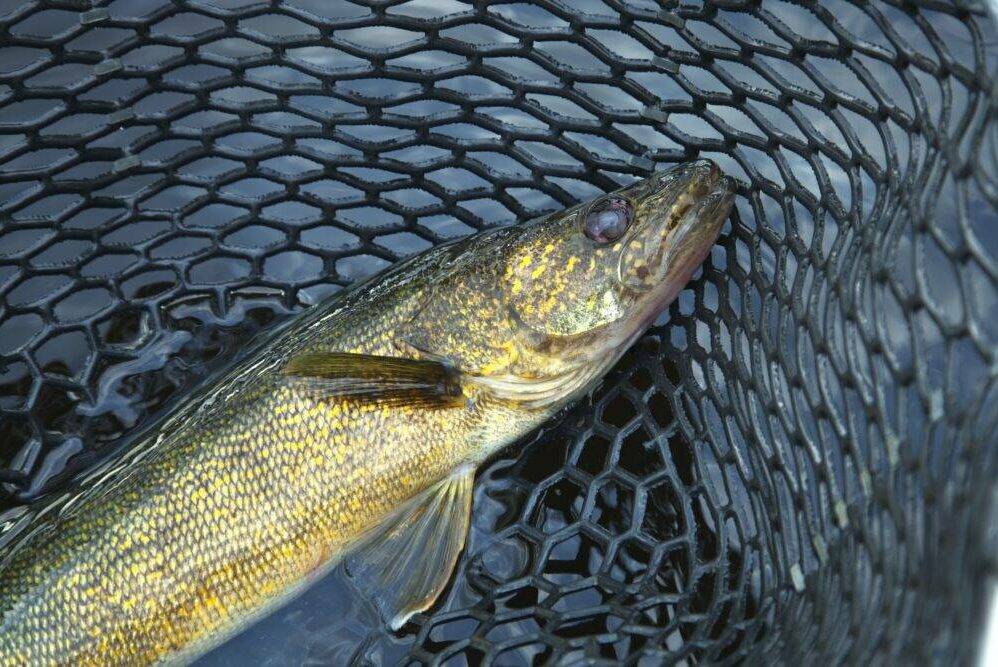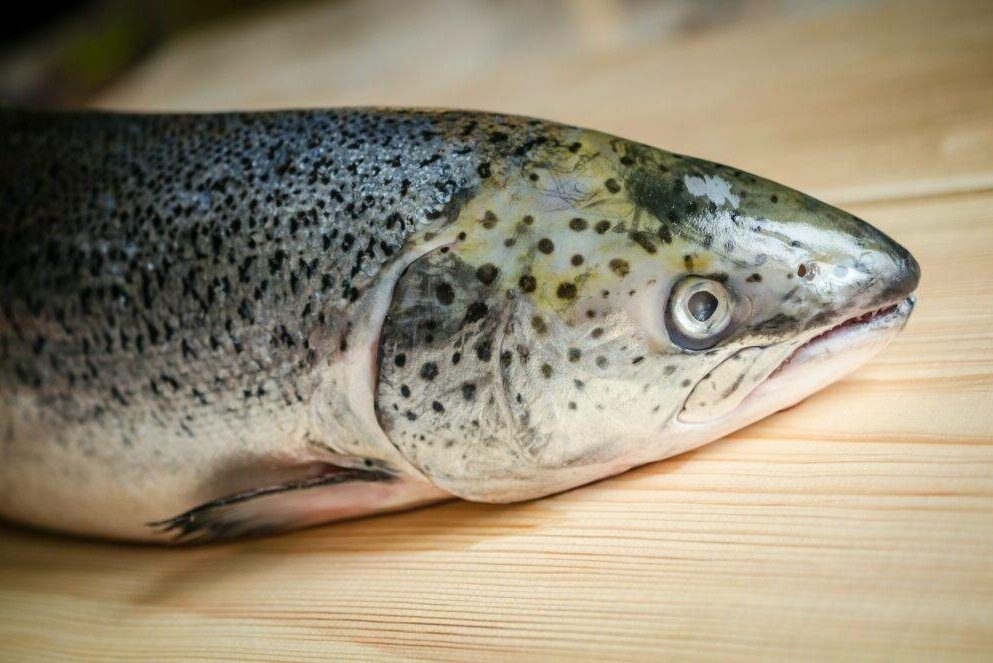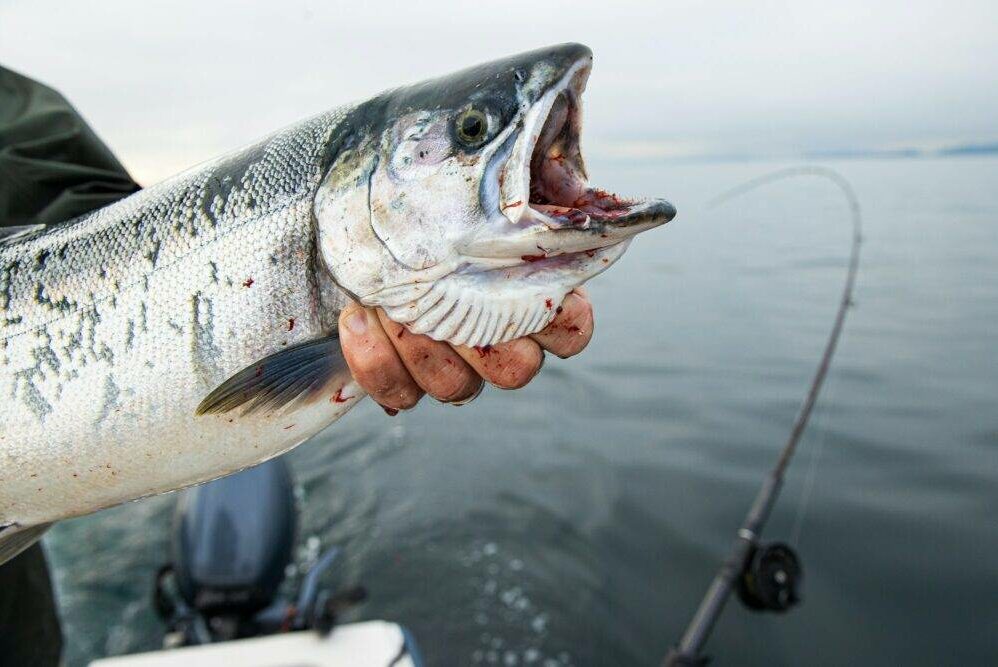Lake Ontario fishing is a favorite pastime of many anglers. It’s also home to some great catches and species you can’t find anywhere else in the world. The lake has something for everyone. It has everything from walleye and bass to the elusive lake trout, salmon, and muskie.
There’s a lot of information out there, and it can be hard to know where to start. But Lake Ontario fishing can be a little intimidating for those new to the sport. We’ve put together this Lake Ontario fishing guide to help you start your Lake Ontario fishing adventure.
Popular Fish Species at Lake Ontario
King Salmon
King Salmon is one of the big game fish out at Lake Ontario. It is a popular catch in Canada and has been marketed as “the new salmon.” They are also known for their oily solid flesh. King salmon are the most desirable salmon in Lake Ontario. They can grow to 35 pounds and thrive in cold water. King salmon are typically found in cold water, so try exploring in water between 35˚F to 55˚F. To catch a king salmon, try trolling spoons near baitfish schools.
A king salmon has a long pointed head and a large mouth. The body is dark on top with light coloring underneath. King Salmon have small scales that help them blend in with their surroundings. As the salmon grow, they develop a larger tail fin for swimming. The king salmon can be distinguished from other species by its large and rounded spots.

Walleye
The walleye is one of the most popular fish species in Lake Ontario. It has a firm, white meat that cooks crispy and flavorful. The best way to catch them is through jigging or trolling. One popular method for fishing walleye is to use a floating stick bait near the harbor mouth, where you can often find large numbers of fish. However, walleye populations can be inconsistent, making them difficult to sustain as a significant fishery. As such, walleye fishing is not as popular as trout or salmon fishing. Around Nine Mile Point is a popular place to fish for walleye, using different techniques depending on the time of year.

Atlantic salmon
Lake Ontario is home to a variety of fish that can be caught. The Atlantic salmon is one such fish that calls the lake its habitat. These are considered gamefish and require special fishing techniques to catch them. They are often found near the bottom of the lake and in deep water.
The Atlantic salmon’s distinctive features make it easy to identify; they are slender fish with a small head and blunt nose, small eyes, and a mouth that gapes back below its eye. Additionally, Atlantic salmon have a milder flavor than other wild salmon, and their flesh has a range of colors.
Salmon can be caught using both fly and bait fishing methods; however, some argue that bait fishing is more effective. Many different types of bait can be used, including minnows, herring strips, worms, or flies. When choosing your bait, keep in mind what the primary prey is for salmon in that specific body of water-in this case, it would be alewife. The primary prey fish in Lake Ontario is the alewife, leading to record catches of Atlantic salmon being caught there recently.
Atlantic salmon is a popular fish in Lake Ontario due to its mild flavor and wide range of colors in its flesh. If you’re looking to catch your own Atlantic salmon, remember to use bait that mimics the primary prey fish in that body of water and to fish near areas with high populations of salmon.

Rainbow Trout
Rainbow Trout are usually found at the bottom of deep water and can be challenging to catch. The best time for catching them is during the evening when a fisherman casts his line towards the bottom of the lake.
Rainbow trout can be caught all year round in Lake Ontario, following the regulations of a minimum length of 21 inches (53 cm). The rainbow trout is a member of the salmon family and can be caught in various ways – with a rod and reel, by fly fishing, or by using bait such as worms or crayfish. The rainbow trout prefers cool, clear water, swift streams, and silt-free substrate.

Brown Trout
Brown Trout is one of Lake Ontario’s most popular fish species. These trout can grow to be large – up to 20 pounds in size! Brown trout are opportunistic feeders that will eat anything available, including insects. The brown trout can be found in the same habitats as the brook trout and prefer temperatures around 54-63 degrees Fahrenheit (12-17 degrees Celsius). The greatest time to catch brown trout in Lake Ontario is in the spring. The best bait to use is worms or nightcrawlers.
Here are some tips for catching brown trout:
– Use a light-colored fishing line, preferably fluorocarbon. This will allow you to see the fish bite.
– Use a drop shot rig with an egg sinker or split shot weight to get the bait down to where the trout are.
– Cast your line out and reel

Coho Salmon
In the spring and fall, Coho Salmon are frequently active in Lake Ontario. Coho salmon migrate up Lake Ontario’s tributaries, including those that feed into Georgian Bay, Lake Huron. Coho salmon are a prized species for sport fishermen, especially in the fall when they return to Lake Ontario from Georgian Bay and Lake Huron.
These salmon can be identified by their silvery sides and dark spots. They have relatively small mouths, which they use to eat plankton while in freshwater before returning to the lake as adults.
The best bait to use when fishing for Coho salmon is a small piece of squid, which you can purchase at most bait and tackle shops.
Coho Salmon Fishing Tips:
– The best place to fish for Coho salmon is at the mouth of rivers, especially near islands.
– Try to fish during high tide and around dusk. Coho salmon are most active at this time of day because they feed on plankton.
– Coho salmon are most active in the winter, so try to fish then.

Best Lake Ontario Fishing Spots
There are many great fishing spots around Lake Ontario. You can find fishing spots along the lake’s shorelines. The best fishing spots include Pulaski, the Salmon River, and the Oswego River. The Bay of Quinte and Niagara County are also great places to fish. In the winter, ice fishing is a popular activity. Toronto also has plenty of options for urban angling. You can find many different types of fish in other parts of the Greater Toronto Area.
What is the best time of year to fish in Lake Ontario?
January is an excellent time to fish for trout and pike in Lake Ontario. Ice fishing continues in February, with fishermen targeting pike and walleye. Trout can also be found in the lake in January. March is the best time to fish for steelhead, pike, and other species in Lake Ontario. April is an excellent time to catch brown trout and king salmon in Lake Ontario. Anglers can fish Lake Ontario from sunrise until sunset in April.
You can catch many fish species in Lake Ontario in May and June. Fishing is excellent in the morning and evening. Fishing in the lake’s western basin is most productive. Anglers can get good results fishing in Lake Ontario by fish species throughout July.
Brown trout can be found by boat or from shore in August when they tend to congregate near colder, deeper water, but salmon are preparing to migrate, so fishing for them is excellent during this time, as well as steelhead, which are best fished for in the early morning or evening. Tributaries are also good places to target steelhead, specifically in December when walleye fishing is also at its peak.
Fishing Regulations at Lake Ontario
In the United States, different laws apply depending on whether you’re fishing in freshwater or salt water. If you’re planning on fishing in Lake Ontario, you must be aware of the different fishing regulations depending on which side of the border you’re on. Some additional rules and regulations apply to sport fishing, commercial fishing, and Aboriginal fisheries in Canada.
It’s essential to familiarize yourself with the regulations that apply to the area you’ll be fishing in to avoid getting fined or having your catch confiscated. Check with the local authorities before heading out onto the lake.
Some of the regulations that apply to sport fishing in Lake Ontario include:
In Canada, the following species are subject to catch and release regulations: brown trout, rainbow trout, lake trout (including kokanee), and brook trout.
The following fish species are subject to size limits: lake trout (including kokanee), walleye, smallmouth bass, largemouth bass, northern pike, and muskellunge.
The following fish species are subject to possession limits: walleye, smallmouth bass, and largemouth bass.
In the U.S., there is no size or catch-and-release limit for brown trout, rainbow trout, and brook trout.
Walleye must be a minimum of 17 inches in length to keep. Smallmouth bass must be a minimum of 16 inches in length to keep. Largemouth bass must be a minimum of 15 inches in length to keep.
What is the best time to fish Lake Ontario?
Lake Ontario is best fished in the spring and fall. In the spring, walleye feed on baitfish and other species like smallmouth bass, perch, and pike. In the fall, walleye and smallmouth bass feed on baitfish and other species like perch and salmon.

